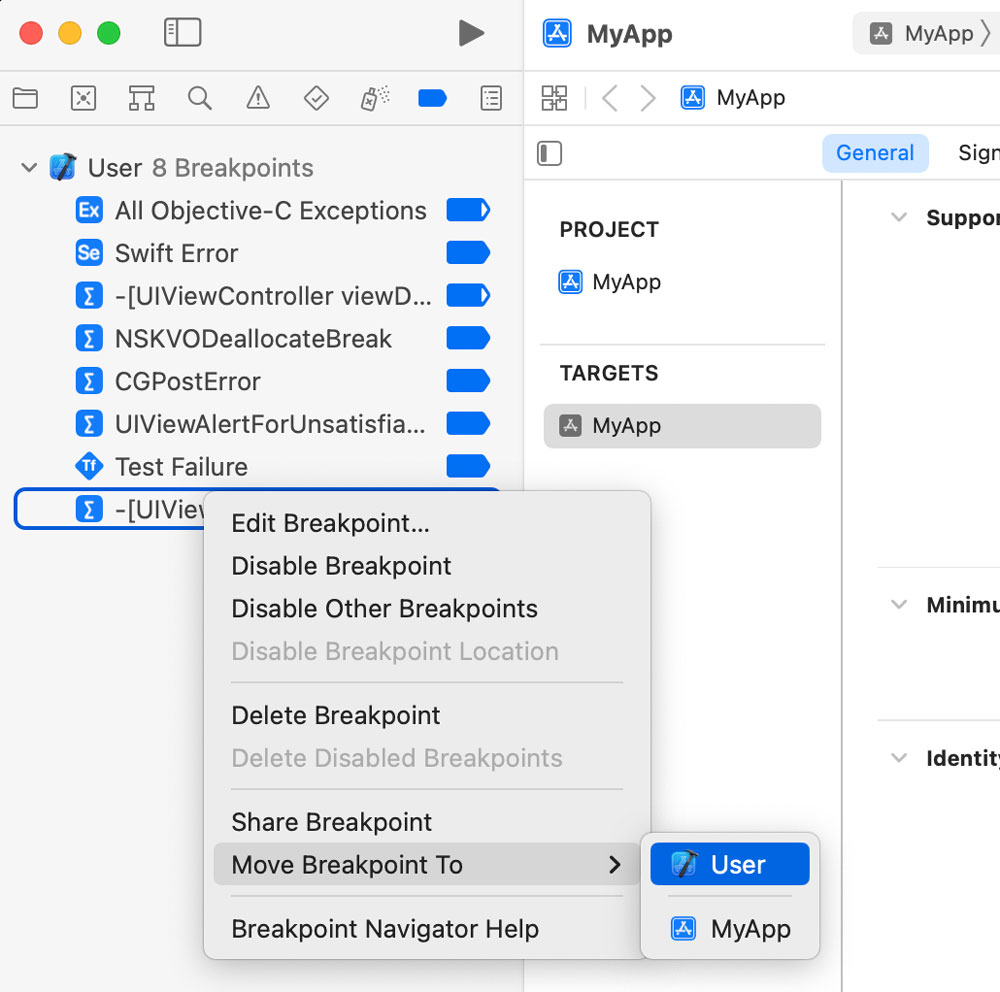In my previous post, I explained how to use symbolic breakpoints to discover when view controllers load their views into memory. Often breakpoints are specific to a project. You’ll create one for a specific class that only exists for that particular app. However, what I discussed in that post would be useful in any project. Unlike regular breakpoints, symbolic breakpoints (at least when set on system frameworks) are more or less universal.
There are many different types of breakpoints that are “generic”, or not specific to a particular codebase — symbolic breakpoints, error breakpoints, exception breakpoints. Most of these can be shared. I’m sure many of you are like me and work with multiple Xcode projects every week — for work, side projects, open source libraries, etc. It would be tedious to create the exact same breakpoints for every single project you work on.
Luckily, Xcode has a solution to this — User Breakpoints! After creating any breakpoint, you can right-click and select: “Move Breakpoint To” > “User” to move it from your project or workspace to user space. After this, you’ll see a shared list of User Breakpoints in every Xcode project you open.
As you can see in this screenshot below, I’ve collected a few over the years. I added many of these User Breakpoints after learning about them in a blog post just like this one! Having these shared breakpoints has been a great way for me to remember various debugging tips and reuse them across all of my projects.

User Breakpoints in Xcode